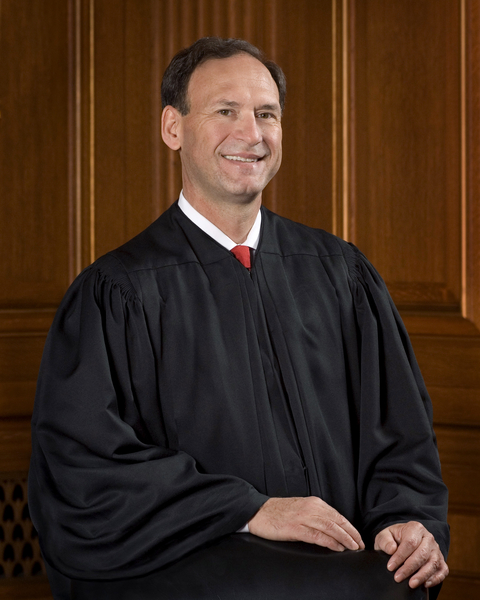Texas Voter Discrimination Ruling Stayed By Justice Alito
It hasn’t been a good year in the courts for the integrity of Texas voting. They’ve had their voter ID laws ruled to be made with the purpose of discriminating against minorities and two separate courts have ruled that they’ve gerrymandered their districts to intentionally “pack and dilute” minority votes. One of these gerrymandering cases was upheld as intentionally discriminatory on appeal a few weeks back–placing Texas on a short deadline to fix the districts before next year’s voting took place. The Voter Rights Act (VRA) and a Supreme Court ruling known as Shelby mean that any of these rulings-if they stick-could leave Texas asking for federal pre-clearance for any voting laws they seek to enact. This is important because the VRA was amended a few years back to remove its enforcement provisions-rendering it essentially toothless unless a case like the ones against Texas succeeds. In the wake of these changes, Texas and states passed voting laws that have faced constitutional challenges across the nation.
However, another wrinkle has been thrown into the equation for the most recent court ruling on the gerrymandering cases against Texas. Justice Alito, acting on his sole authority as a Justice of the Supreme Court of the United States, has issued a one sentence order stalling the ruling requiring Texas to change the make-up of some of its districts. This isn’t a ruling of the Supreme Court, but it does indicate that the Supreme Court will be taking a look at the case once they all reconvene.
In order to understand the implications of Justice Alito’s actions, it’s necessary to take a look at the ruling underlying Justice Alito’s actions.
 The Underlying Ruling
The Underlying Ruling
Gerrymandering in the law operates on a fairly simple principle, creating voting districts with race as the primary consideration, or even just creates a result of diminishing the voting rights of a particular race, is a violation of the Constitution. It is worth noting that, as counter-intuitive as it may sound, there is such a thing as legal gerrymandering. Gerrymandering by political party does not face much of anything in the way of legal repercussions. However, that was not the case here. The court’s three-person panel ruled that the districting was done with the intent and purpose of depriving Latino voters of the ability to elect candidates of their choice.
Texas argued that this could not possibly be the case. After all, the maps were redrawn in 2011-right back when the VRA required Texas to submit voting laws for preclearance due to a history of discrimination-and immediately challenged in court. They lost in court, ruled to be discriminatory, and the court itself redrew the maps. How, asked Texas, could maps drawn by a court be discriminatory?
The answer, according to the court, was that the court in 2011 was essentially forced to do a rush job-and said as much in their ruling. After the original maps were found unconstitutional, both parties offered many compromise plans between them-usually based to some degree on the original maps. Faced with time pressures and an upcoming election that couldn’t proceed without the maps, the court accepted one of these compromises but acknowledged that it only was making a preliminary decision as it had very little time to evaluate the incredibly complicated question of whether a district was drawn in a way that limited the rights of a particular race. Then, in 2013-after the VRA was neutered-a new districting scheme very close to the original scheme-although it implemented parts of the altered version the Court made-was implemented by Texas.
This meant, according to the recent court ruling, that while one district got a pass for following the court’s provisions, most of the districts carried over the discriminatory intent of the original 2011 districts. With this in mind, the ruling required Texas to swiftly change their districts into ones that were not racially discriminatory.
The Effect of Justice Alito’s Order
The stay throws a monkey wrench in the proceedings. However, despite some worrying that the order is an indication that the Supreme Court will overrule the lower court ruling, this is unlikely to be the case. Not only is the order Justice Alito acting on his own, likely to allow the other Supreme Court Justices time to look over the case, the order is also very temporary-only lasting until September 5th after the Supreme Court receives filings from civil rights groups.
What the order does imply is that the Supreme Court will hear this case and decide one way or another. At a minimum, this means that any action on these districts will be delayed for a few months minimum-perhaps even allowing the districts to remain in effect for the 2018 elections. This has the unfortunate side effect of potentially leaving minority voters underrepresented for another full year-an incredible injustice. This stay is early stages for the Supreme Court’s approach here. We won’t know the full extent of what they will do for some time. At this point we can only wait and see if Justice Alito’s order is a temporary roadblock or the end of the line.

Comments